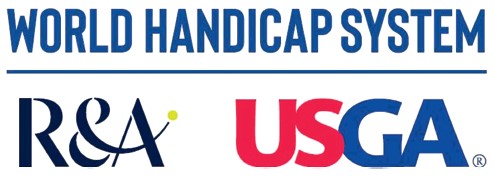 The calculation of golf handicaps is going global with some significant changes but for players in this country the revised system will have minimum impact on their Handicap Indexes. The process of conversion to the World Handicap System (WHS) starts Jan.1 in the United States and ten other countries with completion during the fourth quarter of the year in Great Britain and Ireland.
The calculation of golf handicaps is going global with some significant changes but for players in this country the revised system will have minimum impact on their Handicap Indexes. The process of conversion to the World Handicap System (WHS) starts Jan.1 in the United States and ten other countries with completion during the fourth quarter of the year in Great Britain and Ireland.
The central idea is simple, have one worldwide way to figure handicaps as another step in broadening the game and making it easier for players of all skill levels to play against each other in a more equitable way. Spearheaded by the United States Golf Association (USGA) and the Royal & Ancient Golf Club of Saint Andrews (R&A) for the past several months an ambitious rollout has been underway and in the U.S. the efforts to educate golfers have been primarily centered in the state and regional associations.
When the WHS takes effect those having a Handicap Index under the old USGA GHIN rules will see minor changes in their handicap—probably measured in tenths of a stroke–since rating of golf courses, one of the keys of both the GHIN system and WHS, are already in place. To Implement the WHS worldwide more than 3,000 non-U.S. courses needed to be rated.
Calculation of handicaps will be based on the best eight of the last 20 rounds with two 9-hole scores counting as a round. The old GHIN system used 10 of 20 with a 4% downward adjustment and whereas handicap indexes formerly were figured twice a month they now will be redone daily.
Those who sought to gain an advantage by out and out cheating such as turning in scores higher than they actually shot or who batted the ball round on a couple of holes so they could beat the Equitable Stroke Control rules will be more easily exposed. The highest score now will be a net double bogey based on the players handicap and the hole difficulty rating. Peer review under the old system was ineffective and so-called sandbagging was not caught until after an event, if at all. Daily recalculation of Handicap Indexes seals that loophole.
A further restriction on the how much a Handicap Index may change is part of the calculation as well with a “Soft Cap” of 50 percent if there is a 3.0 stroke increase during the past 12 months and a “Hard Cap” of 5.0 strokes increase in 12 months.
After the new system’s announcement there was a lot of interest in the feature that allows for potential of adjustment to scores due to abnormal weather which can be applied to the scores on a particular golf course should conditions warrant on any given day. Thanks to the power of computers the adjustment will be made immediately after scores are posted. A similar correction has been successful in other parts of the world.
Some of the other important points in the WHS: three rounds needed for an initial Handicap Index; maximum Handicap Index is 54.0 for men and women; scores played as a single no longer allowed; review by a handicap committee every 12 months.
What has not been mentioned in all the publicity is the last numbers available show only about 20 percent of golfers in the U.S. have Handicap Indexes or perhaps 5 million out of 24 million. These presumably are the more “avid” golfers and those likely to play in events requiring a USGA handicap. They also would tend to be private club members rather than public facility players.
Another interesting and largely unappreciated fact is the USGA funds their sanctioned state and regional golf associations with the fees charged for maintaining handicaps. The usual fee of around $25 per year provides money for the state associations to run their organizations and events plus the many regional qualifiers for USGA national championships.
The WHS also in attempting to solve the problem of “gaming the system” when higher scores or sometimes lower scores are posted by prohibiting the posting of rounds played as a single. Obviously, this is tacit acknowledgement there are those who cheat in this gentlemen’s game
Welcome to the real world.
Images courtesy of the USGA
